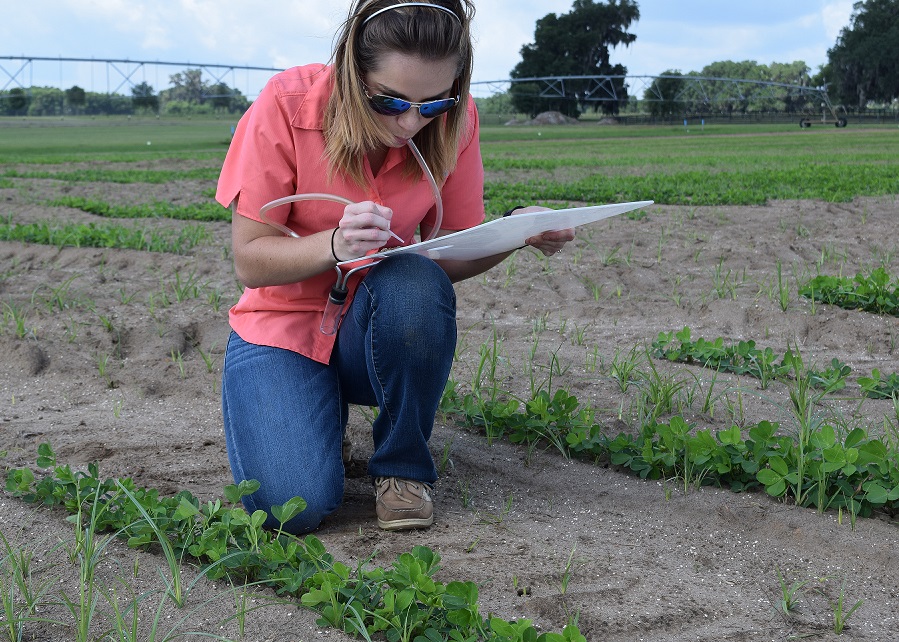Danielle Sprague and Joe Funderburk, North Florida REC, University of Florida, IFAS
Tobacco thrips, Frankliniella fusca, are seedling pests of peanut, soybean, and cotton throughout the southern USA. The adults and larvae feed on the developing leaves, causing injury during the very early vegetative stages of these crops. Severe injury to soybean results in little, if any, economic damage. Peanut also is highly tolerant of injury, although delayed maturity can occur when thrips injury is combined with other early season stresses, such as herbicide injury or drought stress. Seed treatments of the neonicotinoids imidacloprid and thiametoxam for control of tobacco thrips have become typical throughout the region. Scouting for thrips on seedlings and therapeutic control with foliar applications of insecticides provides limited success in preventing damage.
It was originally thought that seed treatments would not likely select for resistant tobacco thrips populations, due to the large host range of the pest and the short window of treatment over the year. A survey of tobacco thrips populations from a number of southern states, however, showed that 57 and 65% of populations had reduced imidacloprid and thiametoxam sensitivity respectively. Thirty-seven of the 86 populations showed up to 55- and 39-fold resistance respectively. Overall, the results indicated elevated levels of resistance throughout the region. No populations from Florida were evaluated, although nearby populations from Alabama and Georgia were included. The results of the survey were published in a refereed scientific journal article (Huseth et al. 2016. Frankliniella fusca resistance to neonicotinoid insecticides: an emerging challenge for cotton pest management in the eastern United States. Pest Management Science, currently in Early View). The article reviews the economics of thrips control on seedling cotton, and the impacts of resistance on pest management programs. It is available online but not open access, here is the website: http://onlinelibrary.wiley.com/doi/10.1002/ps.4232/pdf
Populations in Florida currently are being assessed using the same treated diet assay method in the previously published study. An assay of the population from the North Florida Research and Education Center in Quincy showed a high level of resistance. Crops grown at the site include peanuts, cotton, and soybean, and undoubtedly populations have been heavily exposed to neonicotinoid insecticides. Several other populations currently are being assayed, including a population from the main campus in Gainesville, where the population would not have been expected to have been exposed to insecticides. This monitoring of populations is necessary to understand the levels of resistance throughout North Florida.
A number of states have responded by recommending an additional 1-2 applications of the post-emergent insecticides imidacloprid and/or acephate. Increasing neonicotinoid use to rates necessary to achieve control does not appear to be a viable option. Continued use of neonicotinoids, either as seed treatment or foliar applications, will further intensify selection pressure for resistance. Increased use of insecticides will increase costs and environmental consequences.
Additional relevant links:
Seed treatments and thrips 2016: expectations
Featured Creature article – Tobacco thrips
EDIS publication on Tobacco thrips
- Sampling for Flower Thrips and Their Key Predator in Vegetable Crops - September 27, 2019
- Adding Flowering Plants to Strawberry Fields to Enhance Pest Management and Biodiversity - May 11, 2018
- New Insect and Mite Control Guide for Florida Cotton Growers - September 8, 2017

